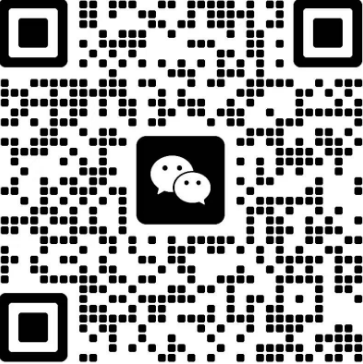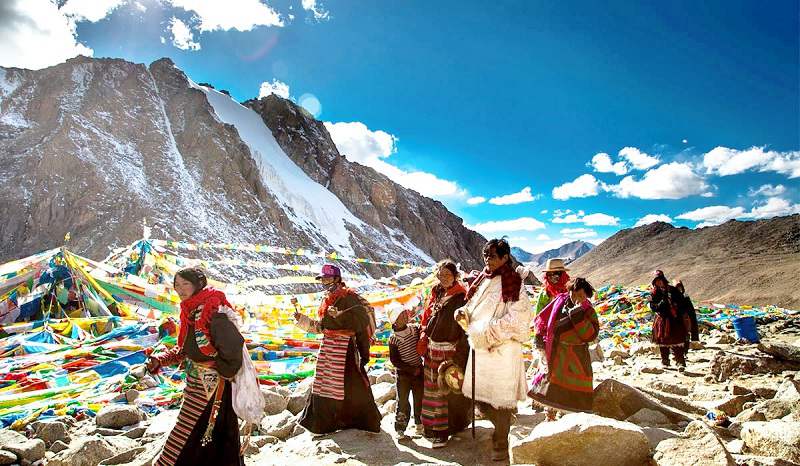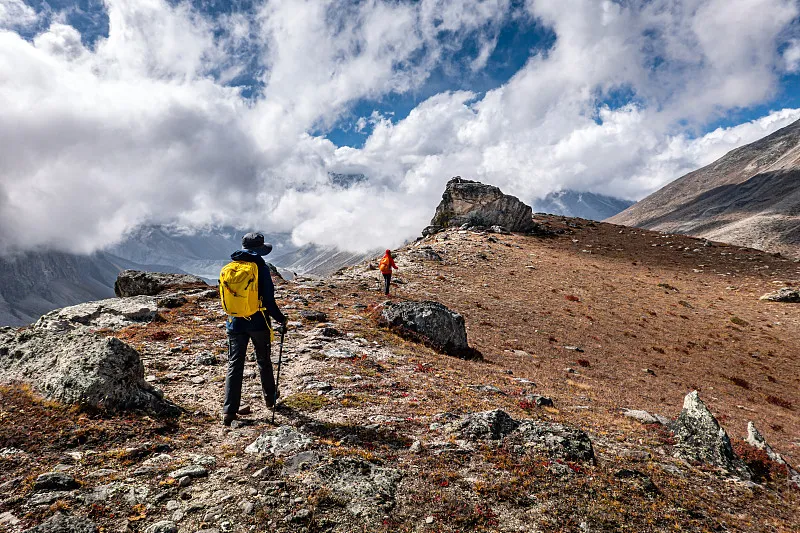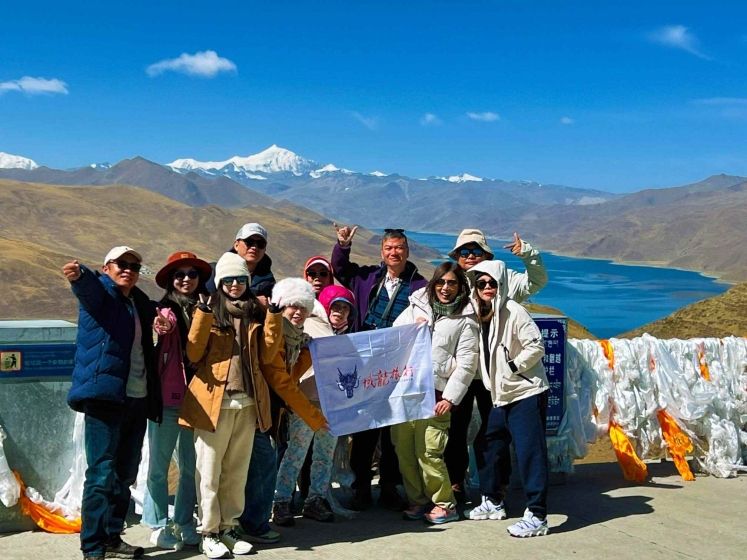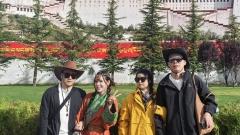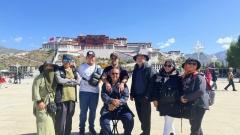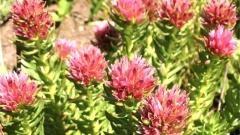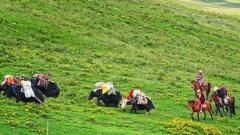Embarking on the Kailash Mansarovar Yatra is more than just a journey—it is a transformative pilgrimage that challenges both mind and body. Over three days of arduous trekking, pilgrims circumnavigate Mount Kailash at altitudes averaging above 4,600 meters (15,091 feet), with the highest point reaching around 5,650 meters (18,536 feet) at the Dolma La Pass. The rugged terrain, thin air, and unpredictable alpine weather make this pilgrimage one of the toughest treks in the Himalayas. Understandably, prospective travelers often wonder: Is there an age limit for the Kailash Mansarovar Yatra? Can young children participate? Is it safe for senior citizens? In this comprehensive guide, we debunk myths about age restrictions, offer expert recommendations, and provide practical advice on training, preparation, and safety—so that pilgrims of nearly all ages can make informed decisions before setting out on this once-in-a-lifetime adventure.
Is There an Official Age Limit for the Kailash Mansarovar Yatra?
The short answer is: No. There is currently no official written age restriction imposed by Tibetan authorities, local permit offices in Purang (TAR), or the Kailash and Mansarovar Attraction Bureau. When you apply for a Chinese tourist visa, a Tibet Travel Permit (TTP), and other necessary permits for the Kailash Mansarovar Yatra, you will not be denied based solely on your age. Instead, Tibetan permit offices focus on health clearance, group bookings, and itinerary details, regardless of whether you are 15 or 75.
- Local Government Policy: Tibetan Tourism Bureau regulations do not specify any upper or lower age limit for trekking around Mount Kailash.
- Permit Process: The primary requirements are a valid passport, China visa, Tibet Travel Permit (TTP), and—in some cases—a Foreign Affairs Permit (FAP) if traveling beyond Lhasa to western Tibet. None of these documentation processes explicitly disqualify applicants on the basis of age.
In short, as long as you are physically fit and do not suffer from severe health conditions (heart, respiratory, or other contraindications), you are generally eligible for the pilgrimage. That said, there are recommended age guidelines that experienced local agencies like China Dragon Travel suggest, based on safety, comfort, and likelihood of completing the trek successfully.
Recommended Maximum Age: Why 75 Is a Practical Cutoff
Although there is no official maximum age limit, most seasoned Tibet travel agencies – including China Dragon Travel – recommend that pilgrims should ideally be no older than 75 years when attempting the Kailash Mansarovar Yatra. Here’s why:
Extreme Altitude & Physical Demands
- On day one, trekkers ascend from base camp to Dirapuk Monastery at an elevation of approximately 5,200 m (17,060 ft)—equivalent to the height of Everest Base Camp in Tibet. Navigating rocky, uneven paths at such elevation demands robust cardiovascular fitness.
- On day two, pilgrims confront the Dolma La Pass (5,650 m / 18,536 ft). Crossing this pass involves a net altitude gain of about 1,000 m (3,281 ft) within a single day. The oxygen concentration at this height is roughly half that at sea level, placing tremendous strain on the heart and lungs.
Thin Air & Altitude Sickness Risks
- For travelers above age 75, the risk of acute mountain sickness (AMS)—symptoms including headache, nausea, dizziness, and severe fatigue—increases significantly. While many younger pilgrims can push through mild AMS with rest and medication, senior trekkers often find it harder to recover quickly.
- Even moderate altitude-related issues (e.g., shortness of breath, rapid heartbeat) can exacerbate preexisting conditions such as hypertension, heart disease, and respiratory challenges.
Harsh Alpine Weather & Unpredictability
Temperatures can swing from 10 °C (50 °F) during daytime to well below freezing at night, with sudden snowstorms or hail possible even in peak summer (June–September). Hypothermia, frostbite, and acute respiratory illnesses are real threats, especially for elderly pilgrims with compromised immunity.
Basic Accommodations & Limited Medical Facilities
- Accommodation en route is very basic—dormitory-style guesthouses with shared rooms, thin mattresses, and minimal heating. Modern comforts such as hot water showers or private rooms are virtually nonexistent above 5,000 m.
- Medical facilities on the kora route are rudimentary at best: a small clinic with limited oxygen, a few beds, and basic first-aid. Emergency evacuation (by helicopter) can be arranged, but at a high cost—often exceeding USD 5,000. Insurance coverage for such evacuations is not guaranteed for those over age 80.
Nutrition & Appetite Suppression
High-altitude trekking suppresses appetite and digestive efficiency. Meals typically consist of instant noodles, simple rice dishes, Tibetan sweet tea (butter tea), and dehydrated snacks. Older trekkers may struggle to maintain caloric intake and hydration, risking muscle wasting and dehydration.
Taking these factors into account, travel experts generally advise that pilgrims aged 76 and above should reconsider or postpone the Kailash Mansarovar Yatra. However, with strict medical clearance, individualized support, and potentially hiring a private porter or yeti staff, a few select travelers beyond 75 have completed the trek—but they remain the exceptions rather than the rule.
Recommended Minimum Age: Why 10 Years Old Is Reasonable
Just as older travelers face unique challenges, very young children (under 10) are also at a disadvantage. Although there is no formal lower age restriction, China Dragon Travel’s recommended minimum age is 10 years old, and here’s why:
Physical Endurance & Mental Resilience
- The three-day kora (circumambulation) typically requires walking 15–20 km (9–12 miles) per day on uneven, steep, and rocky trails. Children under 10 often lack the stamina for such sustained high-altitude exertion.
- In situations of acute mountain sickness, younger children may not articulate symptoms clearly—making it difficult for guide teams to assess and address health concerns promptly.
Long Treks Between Supply Points
Between each guesthouse or teahouse, there can be stretches of 6–10 hours of continuous walking with minimal shade or rest stops. Children may become bored, fatigued, or demotivated, increasing the risk of accidents (slips, falls) and heightening family stress.
Nutrition & Dietary Limitations
Meals along the route are not geared toward young palates: high-altitude cuisine is often heavy in carbohydrates, oily, and lacking in child-friendly vegetables or proteins. This dietary monotony can affect small children’s overall nutrition and energy levels.
Psychological Factors
The vast, open landscapes of western Tibet—while breathtaking—can feel intimidating to very young minds. Emotional support, constant supervision, and a slower pace are required, which can strain a family’s resources if traveling with just one or two guides.
That said, children aged 10–15 who have trained adequately and possess a spirit of adventure can successfully complete the Yatra. Families planning to bring a young child should:
- Undertake several practice hikes above 3,000 meters (9,843 ft) to gauge how the child copes with altitude change and fatigue.
- Pack sufficient snacks, electrolyte powders, and child-friendly medications to manage minor discomforts.
- Hire a private guide experienced in caring for young travelers, ensuring tailored pacing, extra rest breaks, and constant health check-ins.
Training & Preparation: Building Strength, Endurance, and Acclimatization
Whether you are 16 or 65, proper preparation is key to a successful Kailash Mansarovar Yatra. Below are detailed recommendations for physical training, acclimatization exercises, and medical checkups to help you reach peak condition before departure.
Cardiovascular Fitness
At altitudes above 4,500 meters, the oxygen level drops to roughly 60% of what you breathe at sea level. This puts extra stress on your heart and lungs.
Training Plan:
Running & Jogging: Aim for 30–45 minutes of moderate to vigorous running or jogging, 3–4 days a week. Mix in some interval training (e.g., 1 minute sprint, 2 minutes walk) to boost your VO₂ max (maximum oxygen uptake).
Cycling: Mountain biking or stationary cycling at a high intensity improves leg strength and cardiovascular capacity. Try at least two 60-minute bike sessions per week.
Swimming: If you have access to a pool, swim laps for 30 minutes nonstop, focusing on steady breathing and proper technique. This enhances lung function and overall endurance.
Brisk Walking & Hiking: On days off from high-intensity workouts, do 45–60 minutes of brisk walking or light hiking, ideally on inclined terrain to imitate uphill trekking.
Strength & Core Stability
Strong leg muscles (quads, hamstrings, calves), hips, and a stable core are essential for long hours of walking on uneven surfaces. Core strength also helps with balance and injury prevention.
Training Plan:
Squats (bodyweight or loaded with a barbell): 3 sets of 15–20 reps, 2–3 times per week.
Lunges (forward and reverse): 3 sets of 12–15 reps per leg, 2–3 times per week.
Deadlifts: Start light, focusing on form, then progress to moderately heavy weight. 3 sets of 8–10 reps once a week.
Calf Raises: 3 sets of 20 reps, holding a 1–2 second squeeze at the top.
Core Exercises:
- Planks: Hold for 45–60 seconds, repeat 3 times.
- Russian Twists: 3 sets of 20 twists (10 per side).
- Leg Raises: 3 sets of 12–15 reps.
Functional Training: If possible, carry a loaded backpack (10–15 kg) while doing these exercises to simulate trek conditions.
Altitude Acclimatization
Your body needs time to adjust to decreased oxygen pressure. Early acclimatization reduces the risk of acute mountain sickness (AMS), high-altitude pulmonary edema (HAPE), and high-altitude cerebral edema (HACE).
Training Plan:
Local Highland Treks: If you live near mountains, schedule weekend treks rising above 3,000 m (9,843 ft). Spend at least 2 nights above 3,000 m and then return to a lower altitude. Repeat this pattern weekly for 3–4 weeks before your departure.
Simulated Altitude Training: Some gyms offer hypoxic tents or altitude masks. Use them during running or cycling sessions to get a sense of breathing under lower oxygen conditions.
Stair Climbing: Use a tall building’s stairwell, climbing 5–10 flights non-stop, then resting, to mimic altitude-induced fatigue.
Breathing Exercises: Practice diaphragmatic breathing (slow, deep breaths from your diaphragm) and Pranayama (yogic breath control), which can help increase lung capacity and oxygen utilization.
Medical Checkup & Health Clearance
Prior to departure, schedule a comprehensive medical examination that includes:
- Cardiologist Consultation: EKG, stress test, cholesterol profile, and blood pressure evaluation.
- Pulmonologist Consultation: Lung function tests (spirometry), especially if you have a history of asthma, bronchitis, or smoking.
- General Physician: Basic blood tests (CBC, kidney and liver function), nutritional assessment, and discussion of any chronic conditions (e.g., diabetes).
- Vaccinations & Medications: Update tetanus, hep A/B, and consider typhoid shots. Carry a high-altitude medical kit (acetazolamide, dexamethasone, painkillers, antibiotics, electrolyte powders).
A thorough medical checkup not only ensures your safety but also gives your travel agency time to arrange alternative logistics (e.g., extra porters, oxygen cylinders) if needed.
Who Should Reconsider the Kailash Mansarovar Yatra?
Despite the lack of an official age barrier, certain health conditions and life situations make the Yatra too risky. If any of the following apply to you or a planned travel companion, we strongly recommend postponing or choosing a less strenuous itinerary in Tibet:
Cardiovascular Conditions
- Coronary artery disease or a history of myocardial infarction within the past year.
- Uncontrolled hypertension (blood pressure consistently above 150/90 mm Hg), since altitude exacerbates hypertension.
- Severe arrhythmias (irregular heartbeats) that require constant monitoring.
Respiratory Diseases
- Severe asthma with frequent attacks or reliance on multiple inhalers (e.g., combination of short-acting and long-acting bronchodilators).
- Chronic obstructive pulmonary disease (COPD) or chronic bronchitis, as low oxygen levels can precipitate life-threatening respiratory distress.
Blood Disorders & Hematological Issues
- Severe anemia (hemoglobin < 10 g/dL), which compromises oxygen transport.
- Bleeding disorders (e.g., hemophilia) that could be triggered by trauma or stress.
Metabolic & Endocrine Challenges
- Uncontrolled diabetes (HbA1c > 8%), especially insulin-dependent patients, due to erratic food supply and unpredictable exertion levels.
- Thyroid disorders that have not been stabilized (e.g., hyperthyroidism with resting tachycardia).
Obesity & Mobility Issues
- Body Mass Index (BMI) > 30 or morbid obesity (BMI > 35), because the strain on joints and heart at high altitude increases the risk of injury, thrombosis, and heart failure.
- Severe osteoarthritis or knee injuries that impede walking more than 2 km on flat ground.
Neurological & Psychiatric Conditions
- Severe depression or anxiety disorders that may be exacerbated by isolation, altitude, and unpredictable weather.
- A history of epilepsy with frequent seizures, risking injury on uneven terrain.
Pregnancy
- Any trimester of pregnancy is considered too risky. The high altitude, cold, and strenuous exercise pose threats to both mother and fetus.
- Expectant mothers are advised to wait until postpartum before considering high-altitude pilgrimages.
If any of the above conditions apply, consult your physician. In many cases, a short trek around lower-altitude Tibetan locales (e.g., Namtso Lake, 4,718 m / 15,479 ft) may serve as a safer introduction to traveling on the Tibetan Plateau.
Practical Tips for a Successful Kailash Mansarovar Yatra
While training and health screening are fundamental, several logistical and on-the-ground strategies can greatly enhance safety, comfort, and enjoyment. Below are actionable tips gleaned from years of organizing Kailash tours.
Choose the Right Season
- Peak Season: May to September. Among these, June–early July (Saga Dawa Festival period) is particularly popular. Weather is comparatively more stable, and most guesthouses remain open.
- Off-Season: October–April sees heavy snowfall, road closures, and extremely harsh conditions. Only the most experienced and well-equipped adventurers should consider these months.
Travel Insurance & Emergency Evacuation
- Altitude Clause: Ensure your insurance policy explicitly covers high-altitude trekking up to at least 6,000 meters. Some standard policies cap coverage at 3,000–4,000 meters, which is insufficient for Mt. Kailash Kora.
- Emergency Evacuation: Confirm that helicopter evacuation costs (often USD 4,000–6,000) are included. If not, purchase a separate evacuation rider or pay-for-service option.
- Trip Cancellation: Given unpredictable factors (roadblocks, extreme weather, or sudden health issues), a cancellation or trip interruption cover is highly recommended.
Selecting a Reputable Local Travel Agency
Working with a licensed local Tibet travel agency – such as China Dragon Travel – ensures:
Permit Processing
Seamless acquisition of the Tibet Travel Permit (TTP), Aliens’ Travel Permit (if venturing beyond Ali Prefecture), and potential Foreign Affairs Permit for border regions.
Experienced Guides & Porter Teams
Guides who understand high-altitude physiology, local weather patterns, and rescue protocols.
Porters who carry heavy loads (extra clothing, group equipment) so you can pack light and focus on walking.
Prearranged Accommodations & Meals
Prebooked guesthouses in Zutulphuk, Dirapuk, and the base camp ensures you have a guaranteed bed, hot tea, and simple meals (steamed buns, instant noodles, local Tibetan dishes).
Contingencies for road closures: Having backup lodging in Darchen or Saga if passes are shut due to snow or landslides.
Medical & Oxygen Support
Agencies often carry portable oxygen cylinders, first-aid kits, and emergency medications (e.g., acetazolamide, dexamethasone, antiemetics) for altitude sickness management on-site.
Packing Essentials
Layered Clothing
- Base Layer: Moisture-wicking long-sleeve shirts and leggings (merino wool or synthetic).
- Mid Layer: Fleece jacket or insulated vest for warmth.
- Outer Layer: Waterproof and windproof shell jacket and trousers with sealed seams.
- Insulation Layer: Lightweight down jacket for nights and high-altitude mornings.
Footwear
- Sturdy Trekking Boots: Waterproof with good ankle support. Break them in at least 2 weeks before departure.
- Trekking Socks: Merino wool or synthetic blends; pack 4–5 pairs to rotate and avoid blisters.
Accessories
- Warm Hat and Neck Gaiter or Buff.
- Gloves: Inner fleece gloves and outer waterproof shells.
- Sunglasses: UV400 protection to prevent snow blindness.
- Trekking Poles: Adjustable, with carbide tips to maintain balance on rocky trails.
Daypack Essentials (10–15 L daypack)
- Water Bottles: Thermos flask or insulated bottle to keep water from freezing.
- High-Energy Snacks: Energy bars, nuts, dried fruits, electrolyte packets.
- Personal First-Aid: Blister plasters, painkillers, basic antibiotics, anti-diarrheal.
- Altitude Medications: Acetazolamide (Diamox) for AMS prophylaxis, anti-nausea, anti-inflammatory.
- Headlamp: With extra batteries—many guesthouses have limited or no lighting after sundown.
- Toiletries: Biodegradable wet wipes, hand sanitizer, lip balm with SPF, sunscreen (SPF 50+).
- Power Bank & Multi-Plug Adapter: Electricity at high-altitude guesthouses can be sporadic; a power bank helps keep essential devices charged.

Debunking Age-Related Myths & FAQs
Below, we address common misconceptions and frequently asked questions regarding age and the Kailash Mansarovar Yatra.
Myth: “Under 18 & Over 60 Are Automatically Disqualified”
- Truth: The Tibetan Tourism Bureau does not automatically disqualify minors or seniors. The real barrier is medical fitness.
- Practice: Families as young as 12 have completed the trek; likewise, a handful of adventurous travelers aged 78–80 (with excellent fitness levels and private support) have successfully finished the kora. These are extreme exceptions, however, not the norm.
Myth: “Children Cannot Handle High Altitude”
- Truth: Children 10 and above, with prior acclimatization and supervised guidance, can perform comparably to adults—provided they’re physically robust. The key factors are gradual exposure, monitoring oxygen saturation (SpO₂), and ensuring they communicate any discomfort.
- Practice: Carry a small pulse oximeter to check your child’s SpO₂ levels daily. If readings drop below 80–85%, consider extra rest or descending to lower altitude.
Myth: “Seniors Always Need Supplemental Oxygen”
- Truth: While some older trekkers—especially those above 70—may opt for intermittent oxygen to aid in acclimatization, many who are well-trained and healthy do not require continuous supplementation.
- Practice: Agencies typically include portable oxygen cylinders for day use (e.g., 2–4 L/min) as a precaution. If you feel severe breathlessness, supplement for a short period, rest, then continue.
Myth: “No Age Relaxation Means No Young or Old Pilgrims”
- Truth: The absence of an official age restriction actually empowers more people—young and old—to attempt the pilgrimage. It all comes down to self-assessment, expert guidance, and personal willpower.
- Practice: Conduct honest medical appraisals and training regimes well in advance. Use a checklist: cardiovascular health, respiratory function, musculoskeletal strength, mental resilience, and travel insurance coverage.
Nutrition & Hydration: Fueling Your Body at High Altitude
Proper nutrition and hydration strategies are critical across all age groups. Appetite often diminishes with altitude, so maximizing nutrient density becomes essential.
Carbohydrates:
- Aim for at least 60–70% of daily calories from complex carbs (whole grains, oats, barley). Carbs are more oxygen-efficient fuels, requiring less oxygen per calorie burned compared to fats.
- Supplement with energy gels, bars (30–40 g carbs each), and dried fruits to quickly boost blood sugar.
Proteins:
- Consume 1.2–1.5 g/kg of body weight per day, focusing on lean protein sources: Instant tofu cubes (dehydrated, rehydrated on the trail); Powdered milk or whey protein mixed with tea or water; Nuts & Seeds: Almonds, walnuts, pumpkin seeds.
Fats:
- Include moderate amounts of healthy fats (olive oil packets, ghee tea) to sustain energy and aid in vitamin absorption (A, D, E, K).
- Beware of fried foods offered at guesthouses—they are tempting but can cause digestive upset at altitude.
Vitamins & Minerals:
- Vitamin C & E: Enhance immune function; take generic supplements (500 mg Vit C, 400 IU Vit E) daily.
- Iron & B12 (especially if vegetarian): Crucial for red blood cell production to improve oxygen transport.
- Electrolytes: Carry electrolyte powder sachets or ORS (oral rehydration salts) to maintain sodium, potassium, and magnesium levels.
Hydration Strategy:
- Drink 3–4 liters of water per day. Dehydration exacerbates AMS risk.
- Drink in small sips every 10–15 minutes while trekking—never wait until you feel thirsty.
- Add electrolytes to your water (1 liter with 1 sachet) to replace salts lost through sweating, especially when temperatures warm up at lower elevations.
The Ultimate Key to Success: Selecting the Best Local Travel Service
A well-organized local Tibet travel agency is the backbone of a safe, enjoyable Kailash Mansarovar Yatra. When choosing your partner, consider the following:
Legitimacy & Experience
- Look for agencies registered with the Tibetan Tourism Board and China National Tourism Administration (CNTA).
- Seek a track record of at least 10 years of Kailash trekking operations.
Local Offices & 24/7 Support
- Agencies like China Dragon Travel maintain offices in Kathmandu, Lhasa, and Chengdu. This multi-hub presence ensures quick response if you face permit delays, health emergencies, or route changes.
- 24/7 hotline services mean that if you get stranded due to a landslide in Saga or a sudden snowstorm at Dolma La, help is only a call away.
Customizable Tour Packages
- Small Group Tours: If you prefer camaraderie, sign up for a 16-day Mt. Kailash small group tour from Lhasa, complete with festival events (e.g., Saga Dawa).
- Overland from Kathmandu: For pilgrims who wish to experience the traditional Nepal–Tibet border crossing, join a 10-day overland pilgrimage that begins in Kathmandu and ends with kora around Mt. Kailash.
- Private Custom Trips: Tailor your itinerary – adjust daily distances, choose premium guesthouses, or include side trips to Lake Manasarovar, Gurla Mandhata, or Tirthapuri hot springs.
Tour with China Dragon Travel
The Kailash Mansarovar Yatra is the ultimate high-altitude pilgrimage—a life-changing adventure that tests physical endurance, mental resilience, and spiritual devotion. Although no official age limit exists, the practical recommendations of no younger than 10 years old and no older than 75 years old are based on extensive experience with the rigors of alpine trekking and the harsh realities of high-altitude living.
- Young Travelers (10–17): Require meticulous acclimatization, constant supervision, and child-friendly pacing.
- Prime-Age Adults (18–55): Most likely to complete the kora with proper training, endurance-building activities, and mindful altitude management.
- Senior Pilgrims (56–75): Can succeed with rigorous pre-tour health screenings, guided pacing, supplemental oxygen, and extra rest periods.
- Above 75: Undertake the pilgrimage only after thorough medical evaluation, specialized support, and a willingness to accept slower progress and potential route modifications.
Preparations go beyond physical training; they encompass mental conditioning, nutritional planning, and cultural awareness. Choosing the right local operator—one that prioritizes safety, permit logistics, and customer support – makes all the difference. For travelers dreaming of walking the sacred kora around Lord Shiva’s residence and capturing the essence of one of Tibet’s most profound spiritual journeys, there is no substitute for careful planning, gradual acclimatization, and a trusted guide by your side.
About China Dragon Travel
As one of the largest and most experienced local Tibet travel agencies—established in 1984 with offices in Kathmandu, Lhasa, and Chengdu—China Dragon Travel has been a pioneer in organizing tailor-made Kailash Mansarovar Yatras. Our offerings include:
- 15-Day Mount Kailash Pilgrimage Tour from Lhasa, synchronized with local festivals such as Saga Dawa.
- Custom Private Yatras designed to meet specific needs – ranging from premium lodging, personalized acclimatization schedules, to English-speaking medical staff.
With decades of hands-on experience in Western Tibet, our Tibetan guides, medical professionals, and support teams ensure that pilgrims of all ages—within recommended fitness parameters—can undertake the Kailash Mansarovar Yatra safely, respectfully, and comfortably. Contact us today to turn your spiritual aspiration into a reality:
- Website: www.chinadragontravel.com
- Phone\Whatsapp: +86 19980572645
Whether you are a first-time trekker or a seasoned high-altitude adventurer, China Dragon Travel is committed to providing unparalleled guidance and support, ensuring that your Kailash Mansarovar Yatra remains an indelible memory of spiritual fulfillment and personal triumph.

